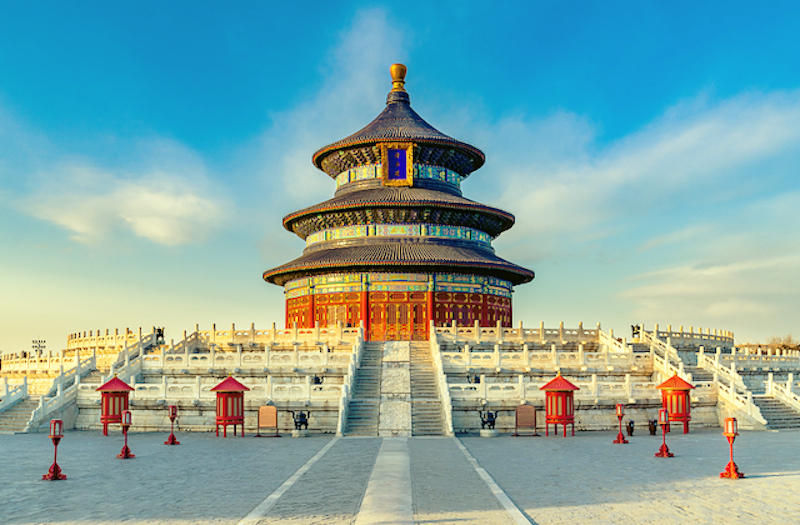Temple of Heaven

[Photo via VCG]
Located on the east side outside the Zhengyang Gate, the Temple of Heaven was used as a site by emperors of the Ming and Qing dynasties to offer sacrifice to heaven and pray for bumper harvests. The northern part of the Temple of Heaven is semicircular while the southern part is square, a pattern representing the ancient belief that "Heaven is round and Earth square". Surrounded by a double wall, and covering an area of 273 hectares, it is divided into the Inner Temple and the Outer Temple by the double wall. Main buildings are concentrated in the Inner Temple. As a masterpiece of building techniques of Ming and Qing dynasties, the Temple of Heaven is a precious ancient architecture and the world's largest building complex for offering sacrifice to heaven.
Must-see Spots
1. Hall of Prayer for Good Harvests
Built in the 18th year of the Emperor Yongle's reign (1420), the Hall of Prayer for Good Harvests, 38.2 meters high and 24.2 meters in diameter, is a rectangle building for offering sacrifice to the Heaven and Earth. Rooms inside represent four seasons, twelve months, twelve two-hour periods and constellations respectively. It is the only surviving ancient Mingtang-style building.
2. Imperial Vault of Heaven
The main buildings are Imperial Vault of Heaven as well as East and West Side Halls in the entire courtyard. Surrounded by a circular wall, known as the Echo Wall, the entire courtyard is a place to house the God's tablets that will be used for the sacrificial ceremony at the Circular Mound Altar.
3. Circular Mound Altar
The Circular Mound Altar is a place for ceremonial sacrifices to heaven on the day of Winter Solstice. The number of stone slabs, balustrades and fences and steps of each layer of the Circular Mound Altar is either nine or a multiple of nine, symbolizing the "nine layers of Heaven". Repeated use of "nine" emphasizes the superior status of Heaven.

